Removing paint from concrete may seem tough, but it's not impossible if you have the right tools and paint removal method. Let's dive into various ways of removing paint from concrete, ranging from pressure washing to grinding, and compare how they stack up against innovative Dustless Blasting equipment. Additionally, we'll walk you through the most eco-friendly and effective method for tackling stubborn paint stains. In this guide, we'll share useful tips to ensure your surface remains in excellent condition throughout the entire process.
Traditional Methods
Removing Paint From Concrete With A Pressure Washer
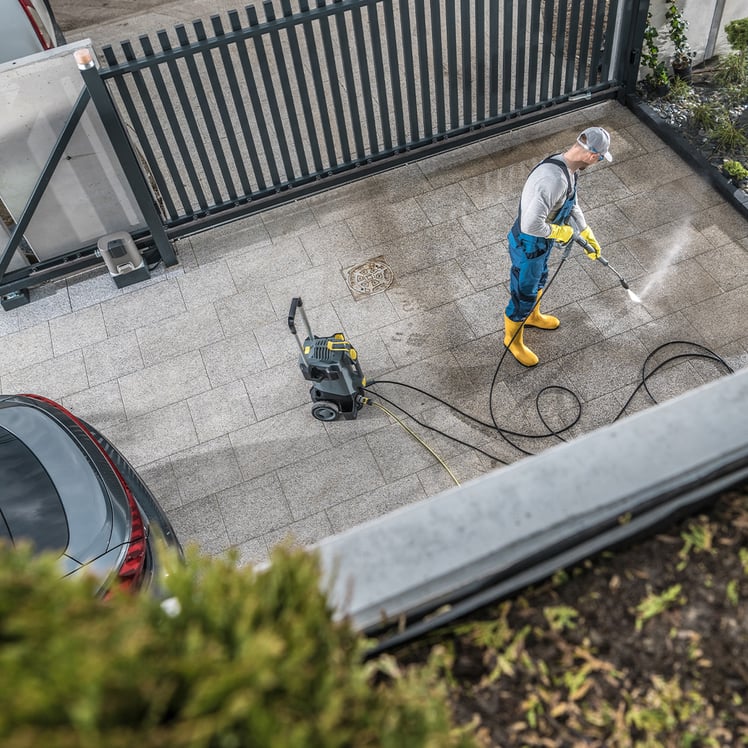
Things To Know Before Pressure Washing
Cleaning paint from concrete is achievable with a pressure washer. To use a pressure washer for this purpose, you will want to choose one with a pressure rating of at least 3000 psi and a flow rate of at least four gallons per minute. Using anything lower will only clean the surface but leave the paint intact.
Before you begin, you will want to ensure that you are wearing proper ear protection. The high-pressure water stream generated by the power washer can be quite loud and may cause hearing damage if proper ear protection is not worn. This is especially important if you plan on using the power washer for an extended period of time.
How To Remove Paint From Concrete Using A Pressure Washer:
- Hook up the pressure washer according to the manufacturer's instructions.
- Turn on the machine and move it in a sweeping motion until the paint clears away.
- Start at the highest point and work your way down.
- Keep the nozzle moving and avoid getting too close to the surface.
- Seal the concrete after it has completely dried.
Pros and Cons of Removing paint with Pressure Washers
Pros: Power washing is a safer and more environmentally friendly alternative to using chemical strippers. They can remove paint, grime and dirt if you use the right one.
Cons: While pressure washing is great for removing loose dirt and grime, it is not as effective at removing paint. This is the least efficient method for removing paint from concrete as production rates are extremely low. If you're not careful with the pressure and movement of the power washer, you can cause damage to the concrete itself. This includes cracking, breaking, or chipping pieces of the concrete.
Removing Paint From Concrete With Chemical Strippers
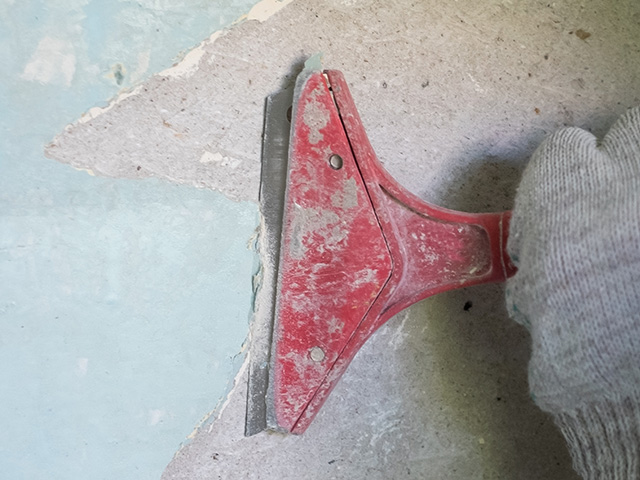
Chemical stripping is another popular method for removing paint from concrete. Paint strippers contain chemicals that break down the chemical bonds between the paint and the surface, allowing it to be easily peeled away.
Things To Know About Chemical Strippers
The most common type of paint stripper used on concrete is a solvent-based stripper. It works by softening the material beneath the paint so that it can be removed with minimal effort. When using this method, make sure to follow all safety instructions listed on the product label in order to avoid any potential hazards associated with improper use of chemical paint strippers or paint thinner.
Always wear protective gear such as gloves and eye protection when working with these products. These products may contain harmful chemicals, such as methylene chloride, that can cause respiratory problems, headaches, and dizziness. Prolonged exposure to these chemicals may also lead to more serious health issues, including liver and lung damage.
How To Remove Paint From Concrete Using A Chemical Paint Stripper:
- Apply a layer of paint stripper to the concrete surface using a brush, broom or squeegee.
- Let the chemical paint stripper sit for the amount of. time specified on the product label. This will allow the chemical to do its job and break down the paint.
- Use a paint scraper, putty knife, or wire brush to remove any remaining paint from the surface.
- Thoroughly clean and rinse the paint stripper off your concrete in order to ensure that no residue from the stripper remains behind. Some paint strippers can cause the concrete to become discolored or pitted, especially if left on for too long or applied incorrectly.
Repairing this damage can be difficult and expensive. If there are multiple layers of paint on your concrete surface, then additional steps may need to be taken. In this case it may be best to contact a professional that is able to remove all paint layers, such as a Dustless Blaster.
Pros and Cons of Removing paint with A Paint Stripper
Pros: Paint stripping and scraping with a putty knife or wire brush is an effective method for cleaning paint from concrete surfaces. It is more effective and efficient than using a power washer.
Cons: It is important to note that paint strippers can be hazardous, particularly those containing methylene chloride. These products work quickly, but pose a high toxicity risk if inhaled or absorbed through the skin. Always prioritize safety and wear protective gear when using these products. Paint strippers are also less successful when needing to remove paint from a large surface. Most concrete restoration companies use concrete grinders or media blasters for large-scale projects.
Concrete Grinding
Concrete grinding is a process of removing layers of paint from concrete surfaces using a specialized machine that grinds away at the surface in order to achieve desired results. This method works best for thinner layers of paint and is often used by professional contractors when working on larger projects. When done correctly, this process leaves behind an even layer of concrete that is free from any old or unwanted residue.
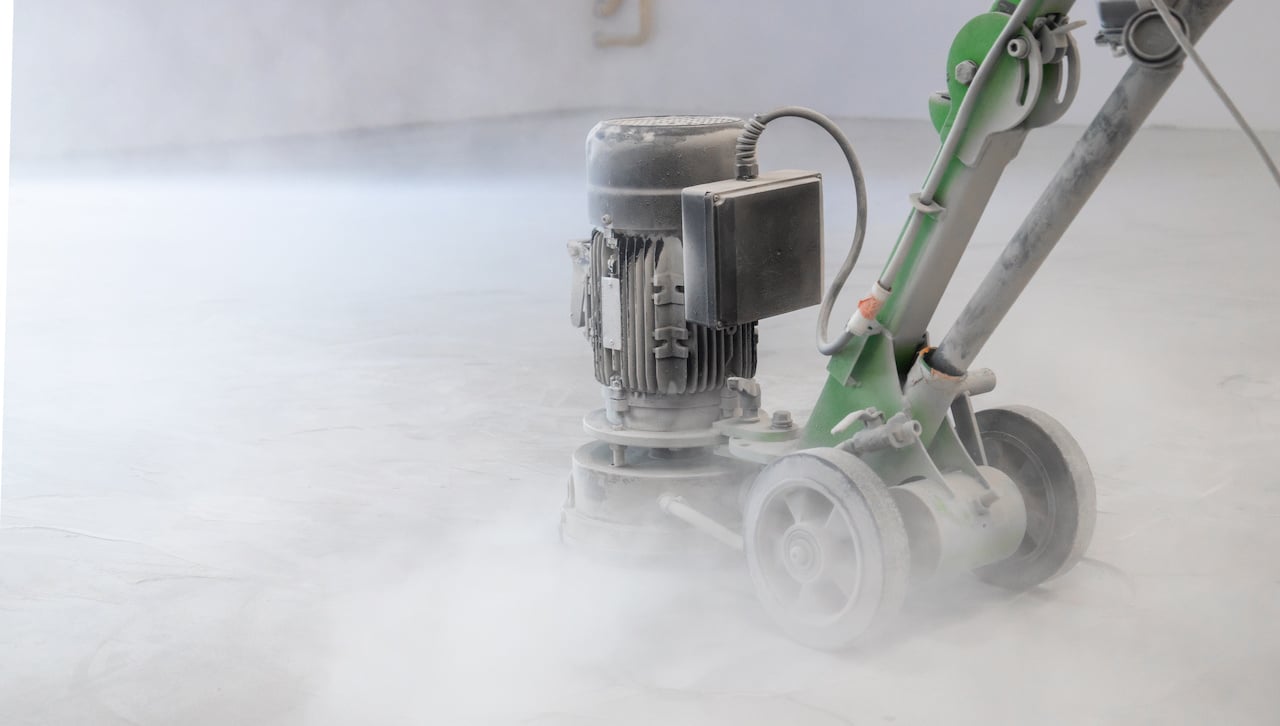
Things to know about Concrete Grinding
Whether you're researching how to clean concrete floor for painting or the best way to restore a concrete wall, it is important to determine whether grinding is the appropriate solution for the specific job. While concrete grinding is a versatile and effective process, it may not be suitable for all situations. For instance, if the concrete is severely damaged or has large cracks, it may need to be replaced rather than ground. Additionally, if the surface has been previously treated with certain coatings or sealers, it may not be possible to grind the surface without damaging the coating.
The surface that is set to be ground must be clean and free of debris before beginning. Any dirt, oil, or other materials on the surface can affect the efficiency of the grinding process. Finally, safety must be taken into consideration. The use of a concrete grinder can produce large amounts of dust and debris, so proper safety equipment, such as eye protection and a dust mask, must be worn at all times.
How To Remove Paint From Concrete Using A Concrete Grinder:
- To begin the grinding process, the appropriate diamond-impregnated disc must be selected and attached to the grinder.
- The grinder should then be turned on and moved across the surface of the concrete in a consistent, back-and-forth motion. It is important to keep the grinder moving constantly to avoid creating deep gouges in the surface.
- Water may be used during the grinding process to keep the dust down and prolong the life of the diamond disc.
- The grinding process may involve multiple passes, starting with a low grit disc and gradually moving up to a higher grit disc to achieve a smoother finish.
- Once the desired finish has been achieved, a polishing pad may be used to further polish the surface.
Pros and Cons of Removing paint with A Grinder
Pros: Concrete grinders offer versatility in removing various coatings and contaminants from concrete surfaces, including paint, glue, and epoxy. The precision of grinders allows for targeted removal and a more uniform surface finish, making it an effective method for paint removal. Additionally, concrete grinders can be a cost-effective option for smaller jobs or when rental equipment is available.
Cons: The process can produce a vast amount of airborne dust, which can be messy and harmful to inhale due to the silica sand in concrete. Additionally, grinding can be a slower process that requires more time and labor to achieve desired results, and may not be suitable for areas with limited access or tight spaces. If not used correctly, concrete grinders can also cause damage or pitting to the underlying concrete surface. That's why we recommend using a professional for this difficult and potentially hazardous job.
For a more in-depth look at concrete grinding vs Dustless Blasting, check out this blog!
Dustless Blasting - Why it's the Better choice
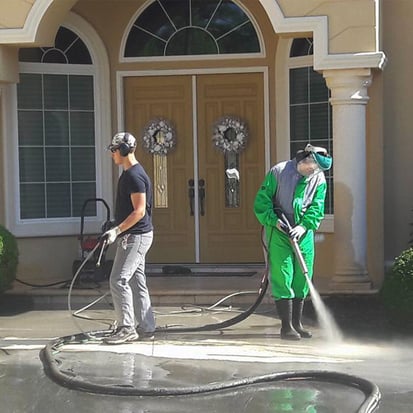
Dustless Blasting equipment is the best tool on the market for paint removal from concrete. By mixing water and abrasive inside the blast pot, Dustless Blasting creates a highly efficient, environmentally neutral blast stream that has the power to not only clean paint from concrete, but remove virtually any coating from almost any surface.
Things to know before you blast
We highly recommend that anyone using a Dustless Blasting machine wear the proper PPE gear. Dust and debris are suppressed in this process and the recycled bottle glass abrasive does not contain free-silica, but it is always best to be safe.
The Dustless Blasting machine is designed with versatility in mind. With highly adjustable blast pressure and the ability to change blast nozzles, you can rest assured that your concrete floor won't be damaged during the paint removal process. The blast pressure can be adjusted depending on the age and thickness of the paint layers that need to be removed.
To make the cleanup process as simple as possible, we suggest covering any nearby surfaces that are not being blasted, such as walls or landscaping. This will ensure that the surrounding area remains clean and free of debris.
How To Remove Paint From Concrete Using A Dustless Blaster
- Prepare the work area and wear protective equipment. This includes covering any nearby surfaces that are not being blasted.
- Connect the water supply and fill the abrasive tank. Choosing the right abrasive will help your efficiency on the job.
- Direct the blasting nozzle at the painted concrete surface. The nozzle should be held at a distance of about 12-18 inches from the surface and moved back and forth in a consistent pattern to ensure even coverage.
- Adjust the settings as needed. Blasting pressure, flow rate, and media type can all be adjusted on the fly to achieve the desired result.
- Clean up the work area and dispose of waste material appropriately.
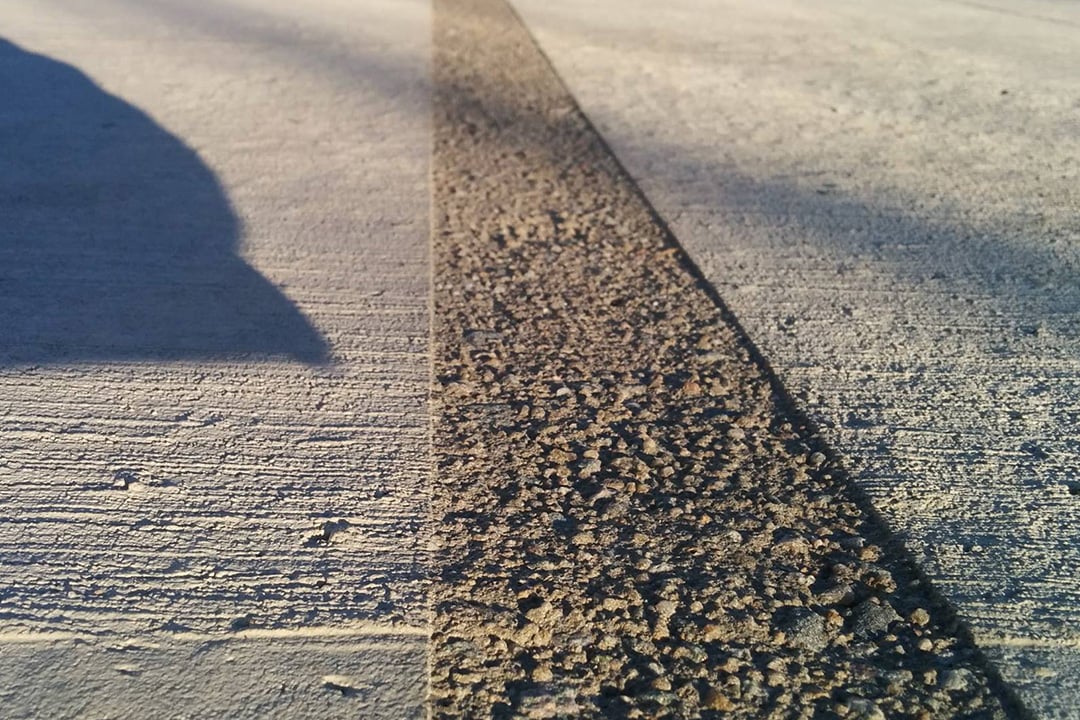 With this adjustable pressure, Dustless Blasting is also capable of etching custom designs into concrete! Read more about Dustless Blasting for concrete etching here.
With this adjustable pressure, Dustless Blasting is also capable of etching custom designs into concrete! Read more about Dustless Blasting for concrete etching here.
Pros and Cons of Using Dustless Blasting to Remove Paint from Concrete
Pros: Dustless blasting offers a safer and more eco-friendly option for cleaning paint from concrete surfaces. By using a combination of water and abrasive media, it generates less dust and airborne debris than traditional methods like sandblasting or concrete stripping. By ditching the traditional paint scraper or grinder, Dustless Blasting is also more efficient and can save time and labor, while being gentler on the surface and reducing the risk of damage or pitting. Best of all, Dustless Blasting doesn't use any harmful chemicals, making it a top choice for both safety and environmental reasons.
Cons: It's rarer to see people own a Dustless Blasting machine for their own DIY projects around the house. However, you can always contact a local Dustless Blasting contractor to get your job done right! While the Dustless Blasting process produces less dust than traditional sandblasting methods, it is important to note that there will still be a cleanup process required after the project is completed.
To read more about how Dustless Blasting can be the answer to all of your concrete and surface preparation needs, check out our guide here or download the concrete case study below!


